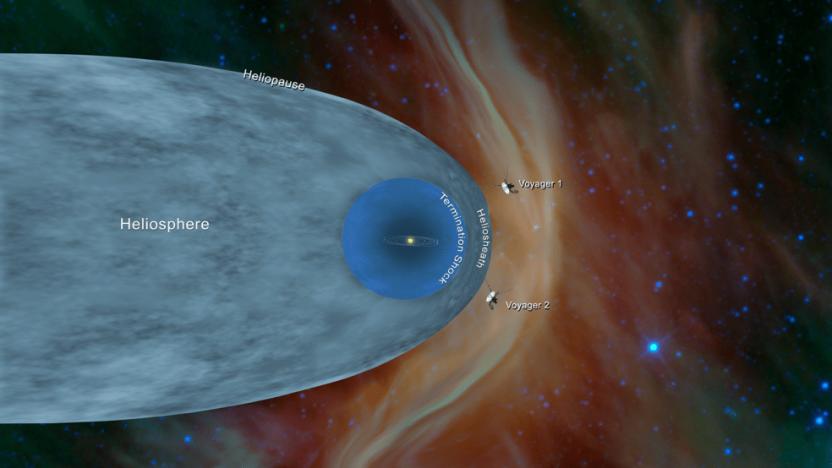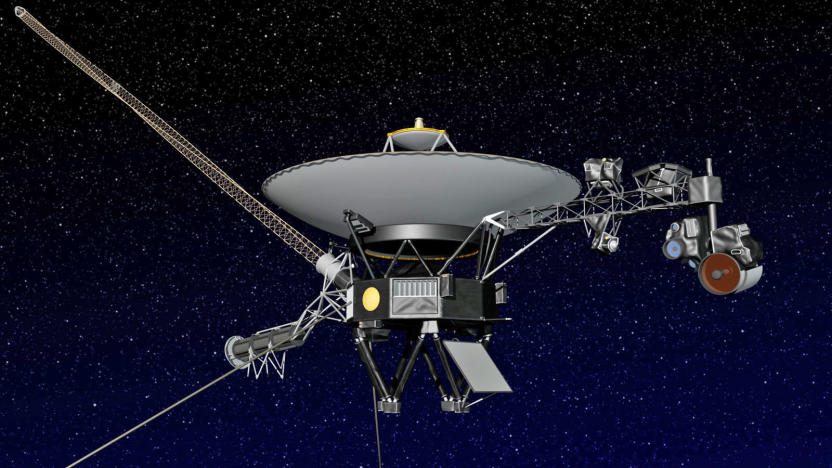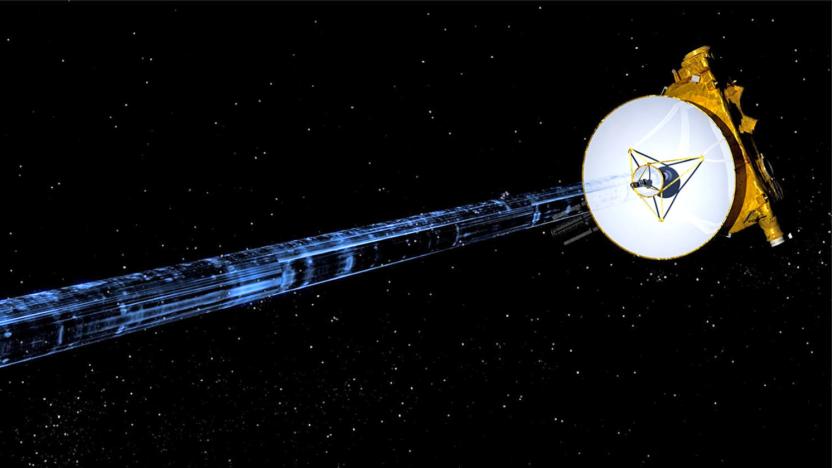heliosphere
Latest

NASA’s Voyager 2 probe has entered interstellar space
NASA's Voyager 2 spacecraft has exited the heliosphere -- the plasma bubble created by the sun that encompasses most of our solar system -- and entered interstellar space, making it the second human-made object to do so. Voyager 1 hit this milestone in 2012. NASA said Voyager 2 crossed over the heliopause, the boundary between the heliosphere and interstellar space, on November 5th and the probe is now more than 11 billion miles from Earth.

Voyager 2 probe may be on the edge of interstellar space
NASA's Voyager 2 probe may be close to joining its sibling and entering interstellar space. The vessel has been detecting a five percent increase in cosmic rays since late August, suggesting that it's close to crossing the heliopause (the edge of the solar wind bubble, aka the heliosphere) and entering the interstellar realm. Voyager 1 saw similar increases in May 2012, so its fellow spacecraft may be in for a repeat.

New Horizons probe may have detected Solar System's hydrogen 'wall'
Scientists have learned a bit about the edge of the Solar System from Voyager 1, but there hasn't been a lot of corroborating data without follow-up spacecraft. They appear to be getting a second chance, though. NASA's New Horizons spacecraft has detected what appears to be a "wall" at the edge of the Solar System where interstellar hydrogen gathers as it collides with the solar wind -- in other words, the very edge of the Sun's influence. Researchers found it by capturing a 360-degree snapshot of ultraviolet emissions around the probe, revealing an unusual brightness (potentially bunched-up hydrogen) similar to a signal the Voyager mission detected 30 years ago.

AGU study says Voyager 1 has reached interstellar space, but NASA remains skeptical
It would be an understatement to say there's been a long build-up to the moment when Voyager 1 ventures into interstellar space: scientists thought the probe was on the edge back in 2010, and we've been waiting for the official milestone ever since. Researchers contributing to an American Geophysical Union journal now believe that the spacecraft may have crossed that symbolic border months ago. Measurements from August 25th onwards show a steep drop in the detected volume of cosmic rays from the heliosphere, just as the extrasolar rays are picking up. Spectrum measurements from the period also mirror those of interstellar regions. On the surface, the clues strongly imply that Voyager 1 has passed the limit of our solar system's influence. NASA, however, disputes the claims -- the agency notes that its vehicle is still traveling the magnetic highway, and it won't have officially escaped the surly bonds of the Sun until the magnetic fields shift. We won't break out the champagne and party streamers, then, but the dispute underscores just how close we are to having another human-made object roaming the galaxy.

Voyager 1 will exit solar system soon, is so close to the void it can taste it
Endurance: it's important in every race, including the space race, even though many pundits would argue that it kind of fizzled a long time ago. Thirty-three years prior to now, NASA's Voyager 1 began its journey to check in on the outer planets. It accomplished that goal in 1989, and has since moved on to bigger and better things -- you know, like leaving the solar system. Ten billion miles away, Voyager 1's Low-Energy Charged Particle Instrument is spitting out "solid zeroes," which means it's not detecting any more outward movement from solar winds. The heliopause (read: the official edge of the solar system) is just a few short years away for the radioactive-powered spacecraft, which is frightening to think about regardless of your experience in Space Camp. What will happen once it enters interstellar space? We're not sure, but we're trying to set up radio comms with its earth-bound synthesizer progeny for some kind of freaky space jam. We'll keep you posted. [Image courtesy NASA/JPL-Caltech]


